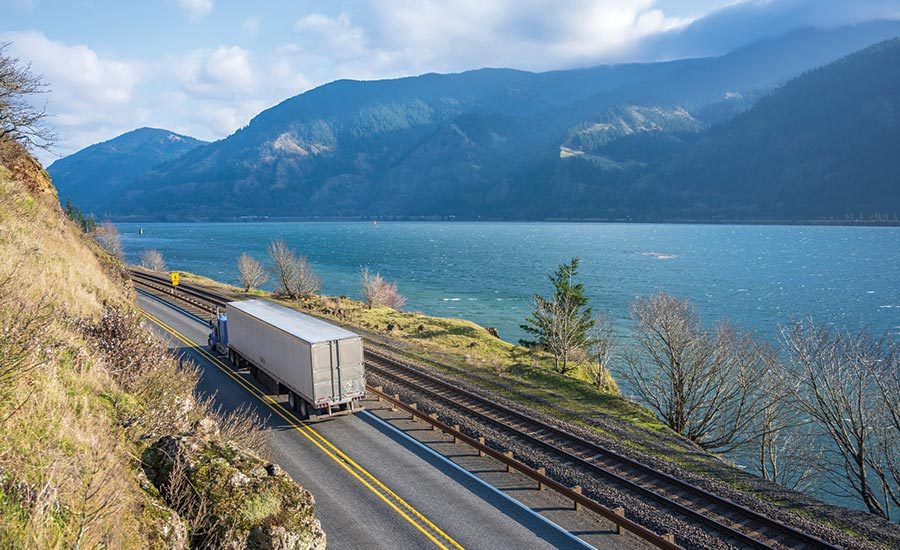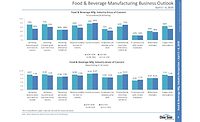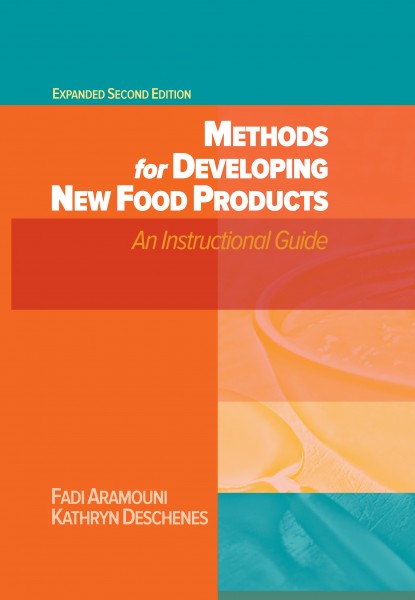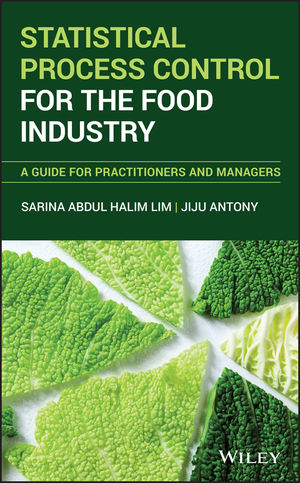Site Selection
Prioritizing criteria to select a new food/beverage plant site

Before ground is broken on a construction project, processors have a long list of variables to evaluate and prioritize.
Photo courtesy of Getty Images

If a construction site has environmental concerns, such as wetlands, processors will need to understand the restrictions and possible mitigation needed to make the site usable.
Photo courtesy of Getty Images

Rising transportation costs have become a bigger factor in site selection. Product often affects decisions too: Ice cream shouldn’t cross mountains, and milk needs to be close to its drinkers.
Photo courtesy of Getty Images



Choosing a site for a new food or beverage plant is a complicated process, with a number of factors to evaluate and prioritize. Each of those factors can affect other factors, making the selection process something like a jigsaw puzzle with no art on the pieces to help guide where they go.
But like a jigsaw puzzle, it’s easier to start small and consider individual pieces before trying to put them all together. There will be major factors such as location, utilities, workforce availability and constructability of the site; there will also be somewhat smaller but still important factors such as tax incentives and possible site cleanup or other environmental concerns.
These factors make the site evaluation tricky because a location might be exactly what you’re looking for in two or three areas, but lacking in others, meaning it could be more expensive or time consuming to build a plant there.
The odds are good that no site is going to be perfect, which means that processors have to decide if it’s good enough. That sounds like—and is—a daunting task, but taking a step-by-step approach to each area of concern can help guide processors to where they need to be.
Regional bias
The first step, generally speaking, is deciding which region you want to be in with the new plant. This is commonly driven by concerns about the source of incoming ingredients and the destination for finished products.
Chris Harmon, senior vice president and project manager, Hixson Architecture & Engineering, describes this as the “center of gravity” for the plant. That doesn’t mean being equidistant between your suppliers and your customers, but it does mean factoring those things into your evaluation of a potential region.
“If you’re doing something with fluid milk, you want to be reasonably close to milk supply,” says Harmon. “So you wouldn’t want to put a facility not geographically coexisting with that supply; otherwise, you’d have a problem because you’re dealing with shelf life.”
The calculation can change quite a bit depending on what materials you’re working with and what finished products you’re making. An ingredient such as raw milk wouldn’t work if you’re trying to ship it from California to Georgia, but dry ingredients would. The same concept applies to finished product; ice cream offers different shipping challenges than cereal.
But even if ingredient freshness or finished product shipping constraints aren’t a major issue for the plant, proximity to suppliers is still something to keep in mind, says Frank Schade, partner, Global Food Properties.
“When you look at locations of plants, being close to key suppliers is critical because that drives cost, and it also allows you to be able to carry less inventory at the plant, and you can replenish inventory in a quicker manner,” he says.
In addition to inventory and supply chain concerns, transportation in general plays a big role in selecting a site. With the transportation industry facing its own challenges, processors are finding that shipping costs and logistics are a complicated equation to solve, says Brian King, owner and president, A M King.
“One of the big issues right now that we’re finding food and beverage companies struggling with when they look at sites—and I use that term, struggling—and that’s the transportation,” says King, “because transportation has become so expensive, and also transportation is going through a bit of a dynamic right now … The transportation industry is changing, as we all know. So they (food companies) really take a look at both their inbound and outbound transportation costs.”
Those costs, as well as scheduling and other logistical concerns, can play havoc with regional considerations for plants. If you have to be close to your suppliers because you need fresh ingredients, but shipping costs and logistics are impossible to manage for your first choice of site, then you’re looking at finding another option.
When it comes to the finished products side of the equation, the characteristics of the product itself come into play. As previously mentioned, something like cereal or another dry product can be shipped relatively easily from anywhere to anywhere else. But if a product has a short shelf life, carries a lot of water weight, or needs certain environmental conditions during shipping, those qualities affect how you evaluate sites and locations, says Kate Snider, senior project engineer in the food and consumer products group at Burns & McDonnell.
“A lot of this goes back to: What is the driver of the new site?” says Snider. “Is this a completely new product? Is this: ‘We’re trying to get to the West Coast because we’ve got to get over the Rockies?’ Ice cream doesn’t transport well over the mountains because of the air inside the product. And so do we need to have something on the west side of the Rockies so that the product’s integrity maintains?”
Workforce challenges
Ingredients and finished products aren’t the only considerations for the big-picture regional selection. Any food and beverage plant needs workers, and the more automated a plant is, the more skilled those workers need to be. With the labor market tight and processors struggling to find and keep qualified people, a region lacking in the workforce you need is probably a nonstarter.
The two sides of the workforce dilemma might be a region that has a lot of available workers who might not have the skillset that you need, versus an area that has skilled workers but probably would require higher pay rates. Wages are a cost that must be kept in mind, but if you’re in need of people with more advanced skills, you’re going to have to pay for them.
If you’re building an automated plant that needs people with more than basic skills, then availability of workers far outweighs what they’ll cost, says Dan Ritzert, senior vice president and division manager of the mechanical process group for Shambaugh & Son, an EMCOR company.
“I don’t have customers telling me they can’t locate in an area because the wages are too high,” says Ritzert. “What I hear customers saying is, we need to know that there are skilled people in the area, and I hear things like, ‘That’s near a university, so we are pretty sure we’re going to be able to find professionals in the area and competent operators.’”
Proximity to a university is usually a good sign for skilled workers, especially engineers, scientists and other employees who need a STEM background. Community colleges with vocational training are a good source for employees who need some level of technical skill that doesn’t necessarily require a degree. Processors can also investigate whether there are state-sponsored or local government initiatives that they can participate in to provide both initial and ongoing training to get the local workforce up to the skill level that they need.
An important consideration when evaluating a workforce is the competition involved with other manufacturers in the area. This doesn’t just mean other food processors; it also means any industry in the area that needs employees with similar skillsets to those needed in a food plant. This is especially prevalent in highly automated plants because many of the skills needed are similar to those of nonfood manufacturers.
“If you are a processor, and you know you need a workforce that is going to be 100 skilled labor and 50 highly educated people, you may not want to be in close proximity to an automotive plant that is going to have 5,000 employees,” says King.
The workforce and what it will cost you are also important to keep in mind for relocation projects, says Snider. Moving from one part of the country to another can lead to a drastic difference in available labor and wage requirements.
“If you’ve got your existing site in Tennessee, and then you’re looking to go to the East Coast or even Colorado or Washington state, you’re going to have a huge cost-of-living increase for your management relocation,” she says. “And you’re also going to have a huge increase in what your labor costs you in those areas.”
On the flip side, going from an expensive area to a less expensive area requires considering whether the new area has the workforce you need.
“You might be able to get some cheap land in the middle of nowhere, but you might also not get the people that you need,” says Snider.
Environmental worries
Processors have to be wary of possible environmental issues with a site. There are a number of different possibilities in this area: everything from illegal dumping to possible soil or groundwater contamination, unnoticed because the site was sitting unused. Beyond concerns that require cleanup or mitigation, the site might have flora or fauna that is protected.
If the issue is something like an illegal landfill or random illegal dumping of trash, that’s a relatively straightforward fix, as long as hazardous materials aren’t involved. But contamination or other more complex concerns can be enough to cause a dramatic increase in cost or even torpedo a site completely.
Environmental concerns may not require cleanup but rather involve changing the complexion of the site itself, says Ritzert.
“I’ve seen sites where we’ve encountered rock, where we’ve needed significant imported fill, sites with illegal landfills, and sites in close proximity to wetlands. All of those things can be significant cost factors in evaluating one site and another,” he says.
In addition to what you can do with a site to make it usable, restrictions on what you can’t do have to be considered. Wetlands or other environmentally sensitive areas will most likely be under pretty strict regulations, along with having sensitive species on the site, says Andrew Glenski, utility planning specialist, business and technology solutions group, Burns & McDonnell.
“We’ve done some work in California where there was a large list of sensitive species near or on the property,” he says.
Utility infrastructure
Any food or beverage plant is going to need a lot of power and water. Food and beverage plants also need a lot of space, so a site that has enough room for the plant may be in a rural or undeveloped area that doesn’t have that infrastructure. Or the existing infrastructure may not be robust enough, especially for a highly automated plant that requires more power to run everything.
“Generally, it’s more of a local thing that you can have one site that is in pretty good shape for utilities and another one that’s just in the next county that isn’t,” says Harmon. “So it’s a combination of immediately available utilities and the ability of the local utility suppliers to provide what you need.”
If existing infrastructure isn’t sufficient, then the question becomes whether it can be made sufficient through upgrades or new infrastructure construction. That is a big cost, which then leads to the question of whether the local government or economic development authority would be willing to take on some or all of the cost. For a plant that employs a lot of people, the answer might be an easy yes. But for a highly automated plant with a relatively small workforce, the question might be a more difficult.
Local concerns can vary widely as well. A site in one area might have enough electrical infrastructure but not enough natural gas. Or it might be lacking in water or wastewater infrastructure. Water availability is a major concern in certain parts of the country, says Schade.
“If you’re in the Southwest, and you have to build a plant, and you need a significant amount of good clean water, how do you treat that water?” he says. “Can you get the quantity of water you need? And what is the quality of the water?”
When it comes to wastewater, a large food or beverage plant could easily overwhelm the local municipality’s capacity for treatment. An on-site wastewater treatment facility is a common solution, but that is an additional cost.
Overall, utilities play a big part in which sites make the cut for serious consideration.
“A lot of these come down to cost and schedule,” says Glenski, “so looking at how long it’s going to take if you’re having to extend utilities, versus a site where all the utilities are there, but it comes at a much higher land cost because it’s privately owned.”
Economic incentives
Local governments and economic development authorities will often offer tax or other economic incentives to bring in new business. These benefits can be substantial, but they usually hinge on how many jobs will be created and pay out—or pay back, as the case may be—over time.
There are different types of incentives and variations in how they’re structured. There can be upfront incentives, such as a tax break for a certain number of years or in perpetuity, that simply depend on the company making a commitment to build in a certain location. There are also incentives that depend on certain benchmarks or extend over a certain timeframe.
Where the incentives over time can get tricky is in managing them to make sure you’re hitting all the requirements at the right time, says Harmon.
“So there could be a five-year rebate on training, job training of some kind, and it will have all this boilerplate in the regulation around it,” he says. “And it’s going to require this paperwork and forms to be filled out. So you need somebody to do that. And the project team, they’re focused on the building, and then that can get lost in the shuffle.”
Incentives can play a role in tipping a decision from one site to another, especially if you’re considering sites in several states. But ensuring that you get the best deal possible can be tricky if you’re receiving offers from multiple entities because tipping your hand too early can result in losing out on a better offer from another area.
“If you’ve secretly got three sites, but secretly the one you really like is in Ohio, you don’t want to tell anybody,” says Harmon. “You want the Ohio officials to think that you’re just about ready to go somewhere else, and then you really can’t start doing a whole lot of engineering or development on that site because you don’t want to give anybody the impression that you’ve made a decision. You certainly can’t file for permits. You can’t close on the purchase.”
In addition to that, incentives from government entities have an approval process that can take quite a bit of time because they’re often required to have public comments or hearings, as well as votes by an agency board or a governing body. Identifying and investigating possible incentive opportunities early on in the process are key to avoid getting to a point where you’re ready to break ground but have to wait for incentives to be approved.
A comprehensive process
Identifying potential sites, narrowing down the list and making a final decision is a complicated process, and it requires a lot of planning, research and careful consideration of numerous factors. A new plant is a major investment, and processors want to be sure that they’ve got all the boxes checked before committing money and resources to developing a site.
A pragmatic, step-by-step approach to evaluating the pros and cons of sites takes a lot of time, but it is critical to invest that time before making a final decision and moving forward with a construction project. A site may look great at first but have a nasty surprise hiding just under the surface, either figuratively or literally. Processors that do their homework can mitigate the risks and increase the chances of bringing the project in on time and on budget.
“What we call a fatal flaw is when we discover something that the site possesses that potentially will not allow it to be developed,” says Glenski. “So really, we do look at all the sites relative to each other and just go through our list of things, like environmental, utilities, constructability, and then try to weigh all those out against each other to see which site looks to be the best to develop.”
For more information:
Hixson, www.hixson-inc.com
Looking for a reprint of this article?
From high-res PDFs to custom plaques, order your copy today!












